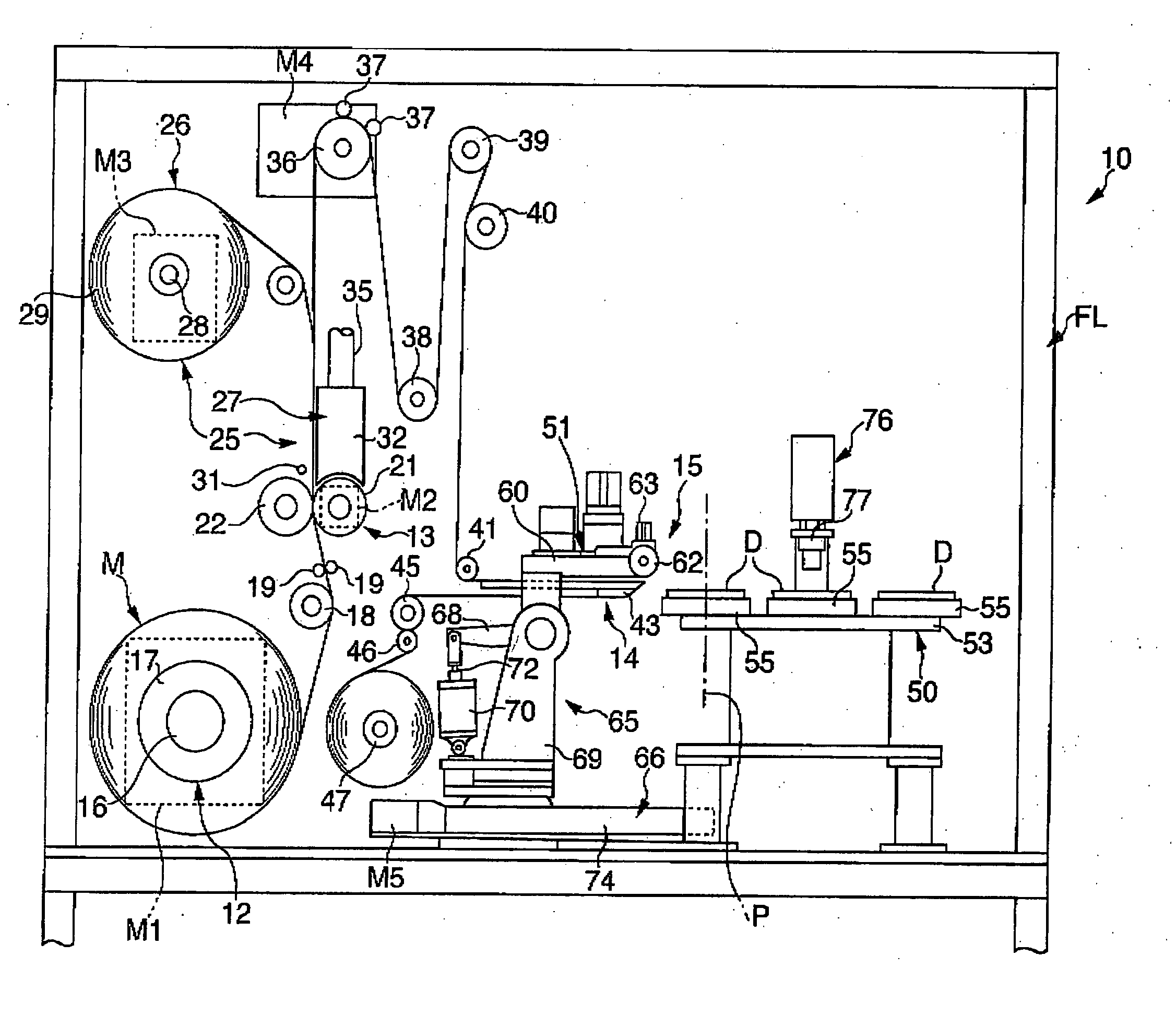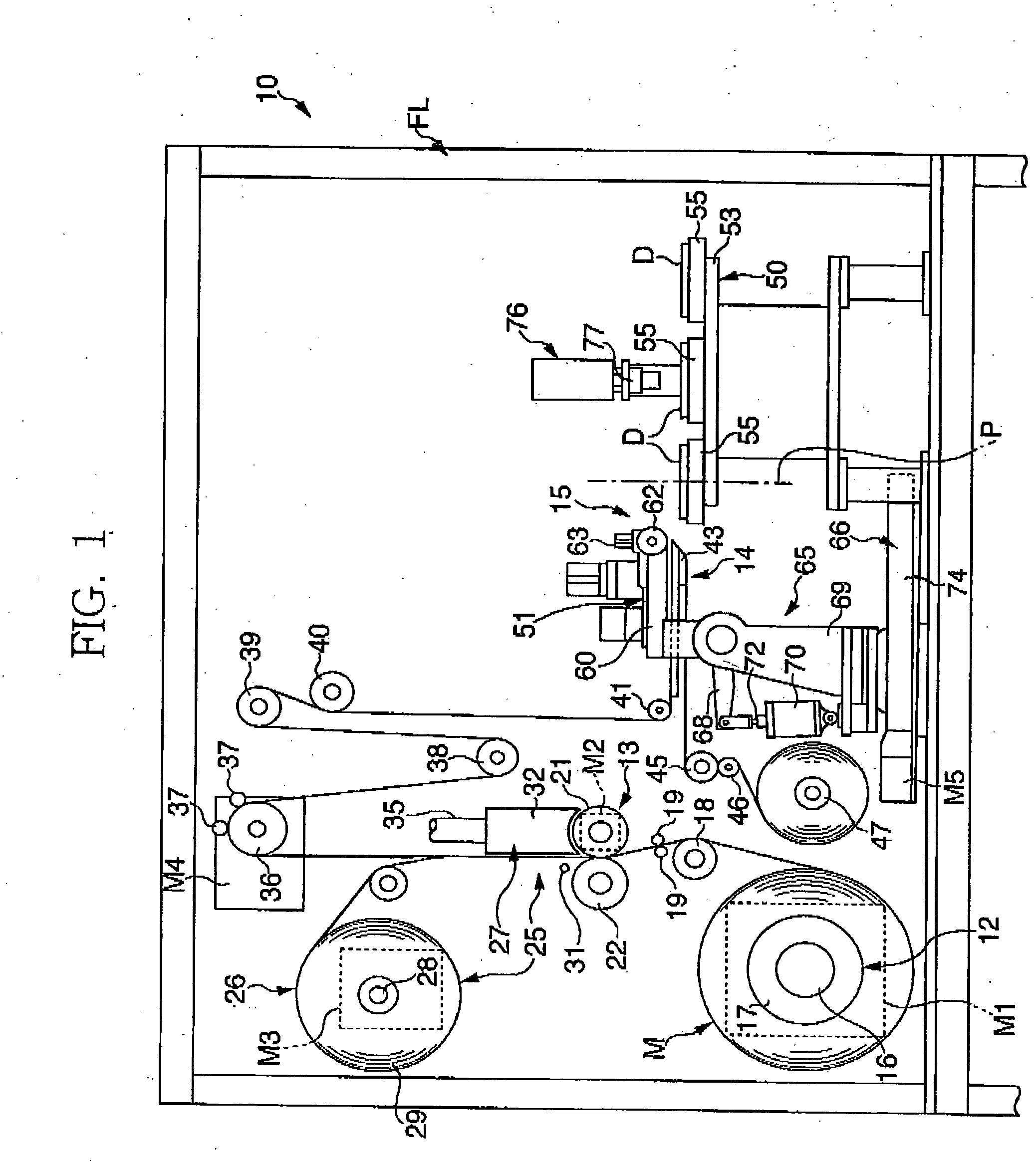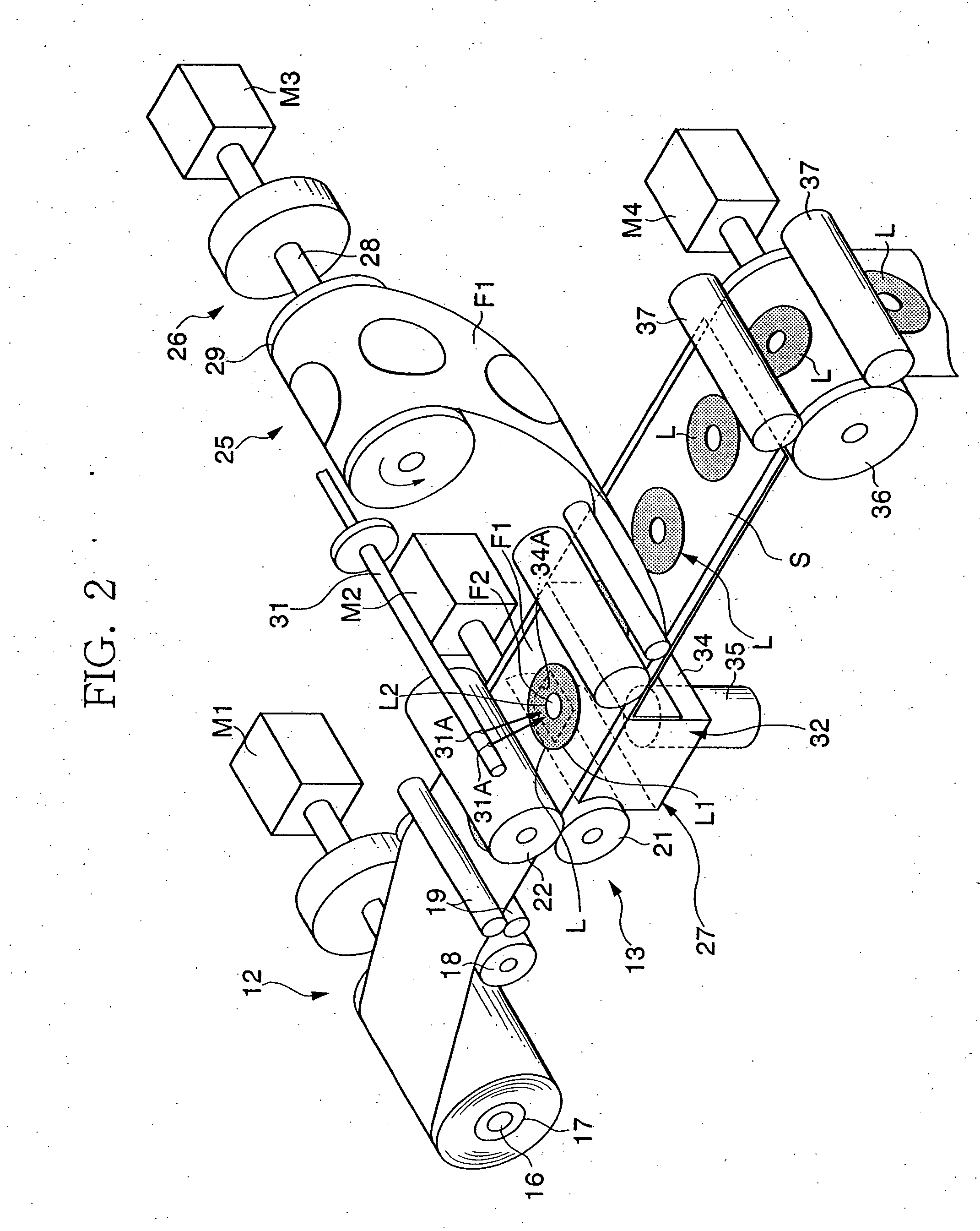Laminating apparatus
a technology of laminated paper and abrasives, which is applied in the direction of mechanical control devices, instruments, process and machine control, etc., can solve the problems of reducing affecting recording or reproducing, and reducing the quality or lamination failure so as to prevent the decrease in the surface accuracy of the protective paper, the effect of avoiding effectively the conventional lamination failur
- Summary
- Abstract
- Description
- Claims
- Application Information
AI Technical Summary
Benefits of technology
Problems solved by technology
Method used
Image
Examples
Embodiment Construction
[0021] Now, one embodiment of the present invention will be described below with reference to the attaching drawings.
[0022]FIG. 1 is a view schematically showing the structure of a laminating apparatus according to the embodiment. FIG. 2 is a perspective view schematically showing a part of component parts shown in FIG. 1, of which layout is changed for the convenience of the description. Referring to these drawings, a laminating apparatus 10 is structured so as to be roughly received within a frame FL defining the outer shape of the apparatus. Provided in the frame FL are a feeding means 12 disposed to feed a strip material M wound into a roll-like shape, a pre-cutting means 13 for forming a predetermined cut in the strip material M fed out from the feeding means 12, a peeling means 14 for peeling a protective label L (refer to FIG. 2) formed by the pre-cutting means 13 from a base sheet S, and a label laminating means 15 for laminating the peeled protective label L to an optical ...
PUM
| Property | Measurement | Unit |
|---|---|---|
| tension | aaaaa | aaaaa |
| speed | aaaaa | aaaaa |
| area | aaaaa | aaaaa |
Abstract
Description
Claims
Application Information
 Login to View More
Login to View More - R&D
- Intellectual Property
- Life Sciences
- Materials
- Tech Scout
- Unparalleled Data Quality
- Higher Quality Content
- 60% Fewer Hallucinations
Browse by: Latest US Patents, China's latest patents, Technical Efficacy Thesaurus, Application Domain, Technology Topic, Popular Technical Reports.
© 2025 PatSnap. All rights reserved.Legal|Privacy policy|Modern Slavery Act Transparency Statement|Sitemap|About US| Contact US: help@patsnap.com



